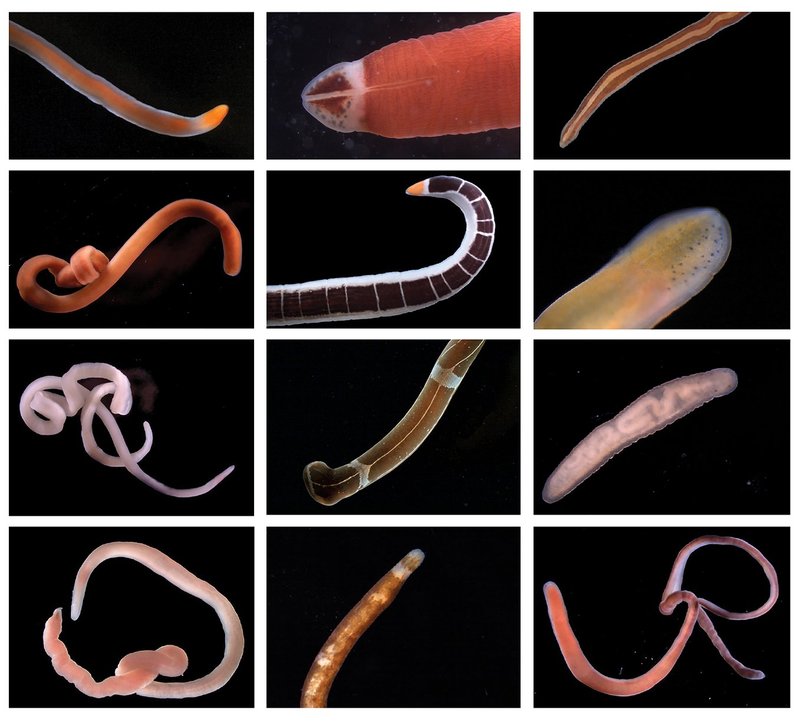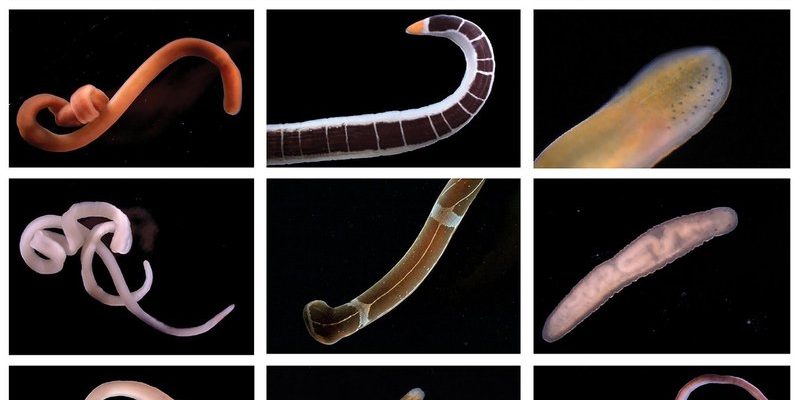
Now, you might be wondering how these little beings actually respond to changes in their environment. Do they pack their bags and move, like we would when the weather turns cold? Or do they have other strategies in place? Let’s dive deeper into the world of ribbon worms and explore how they adapt to the various challenges nature throws their way.
What Are Ribbon Worms?
Before we dig into how ribbon worms react to environmental changes, let’s clarify what they actually are. Ribbon worms, or *Nemertea*, are soft-bodied worms that can vary greatly in size. Some are just a few centimeters long, while others can stretch over 30 meters! Their body is long, slim, and often colorful, resembling a ribbon—hence their name.
These creatures are mostly found in marine environments, burrowing into the ocean floor or hiding among rocks and seaweed. One of their standout features is a special organ called a proboscis. This organ can extend and retract quickly and is often used for hunting. It’s like having a built-in fishing line to grab unsuspecting prey!
What’s more interesting is how ribbon worms interact with their surroundings. Just like humans react to weather changes—grabbing a sweater when it gets chilly or seeking shade on a hot day—ribbon worms also have strategies to cope with environmental shifts.
Responses to Temperature Changes
Temperature changes can have a huge impact on many living beings, and ribbon worms are no exception. They thrive in specific temperature ranges, so when the water gets too cold or too warm, they need to adjust.
In colder temperatures, you might find these worms burrowing deeper into the sediment. This behavior helps them avoid harsh conditions. In contrast, as the water warms up, they become more active. You could think of them like a car starting up after a long winter—once it’s warm, they’re ready to zoom around and hunt!
Interestingly, ribbon worms have developed different survival strategies based on their habitat. For instance, some species living in colder, deep-sea environments display slower metabolic rates, allowing them to conserve energy when food is scarce.
How Do They Handle Salinity Changes?
Next up is salinity, which refers to the saltiness of water. Ribbon worms often inhabit coastal areas, where salinity can fluctuate due to rain, evaporation, or human activities. This can be stressful for them.
When the salinity levels drop—let’s say after heavy rainfall—ribbon worms can actually adjust their body fluids to match the new environment. This process is called osmoregulation. Imagine it like how we sometimes crave salty snacks when we sweat a lot. In a similar way, these worms balance their internal conditions to stay healthy and functional.
Conversely, if salinity increases, they’re likely to retreat to lower-salinity zones. This instinct to seek out optimal living conditions shows how adaptable these worms can be, giving them a better chance of survival.
Behavioral Changes Due to Light Exposure
Light is another environmental factor that affects ribbon worms significantly. These worms have a keen sense of light and dark. You might wonder, “Why does that matter?” Well, light exposure influences their hunting and mating activities.
When exposed to bright light, ribbon worms often hide deeper in the sand. It’s their way of avoiding predators that hunt during the day. Think of it as a child running inside when the sun gets too bright. On the flip side, during darker hours, ribbon worms become more active, emerging to look for food and mates. This behavior showcases their ability to adapt their routine based on what’s happening around them.
Additionally, some species exhibit photosensitivity, responding to light intensity with changes in their body color. It’s like wearing sunglasses on a sunny day; they’re just protecting themselves and improving their chances of survival.
Impact of Pollution and Human Activity
Sadly, pollution is an environmental change that affects all marine life, including ribbon worms. Chemicals, plastics, and other debris can wreak havoc on their habitat. In areas with high pollution levels, ribbon worms often struggle to survive. This is due to a combination of reduced food sources and direct toxicity from harmful substances.
However, these worms have shown a remarkable ability to adapt to some degree. In less polluted waters, they can flourish and reproduce, which allows their populations to bounce back. Think of it like a neighborhood recovering after a storm—the more resources and clean environments available, the faster they can rebuild their community.
In response to pollution, some scientists are exploring whether ribbon worms can serve as bioindicators. These are species that can give us insight into the health of their environment. If ribbon worms thrive, it’s a good sign that the ecosystem is healthy; if they decline, it’s a warning that something needs to change.
Seasonal Adaptations
Just like many animals that prepare for winter, ribbon worms exhibit seasonal adaptations. During the colder months, they tend to become less active and may enter a state similar to hibernation. This allows them to conserve energy when food is scarce.
As spring approaches, temperatures rise, stimulating their metabolic rates and activity levels. They start hunting, mating, and feeding more actively. This seasonal shift is crucial for their lifecycle, enabling them to thrive when conditions are most favorable.
You might think of ribbon worms as seasonal gardeners. They know when it’s time to plant (or in their case, reproduce) and when to hold back in order to survive. Understanding these patterns gives us insight into their behavior and how we can help protect them.
The Importance of Understanding Ribbon Worms
So, why does all this matter? Understanding how ribbon worms react to environmental changes helps us appreciate the delicate balance of marine ecosystems. They might be small, but they play essential roles, such as helping to control prey populations and contributing to nutrient cycling in their habitats.
Additionally, by monitoring these worms, we can gather important data about the health of our oceans. If they struggle to adapt to changes, it could indicate broader environmental issues that need our attention. This insight is critical for conservation efforts and for making informed decisions about our oceans’ future.
In conclusion, ribbon worms, while unassuming and small, have fascinating ways of dealing with the ups and downs of their environments. From temperature and salinity changes to pollution and seasonal shifts, their adaptability serves as a reminder of nature’s resilience. By understanding these worms better, we can not only appreciate their unique biology but also take steps to protect our precious marine ecosystems.

